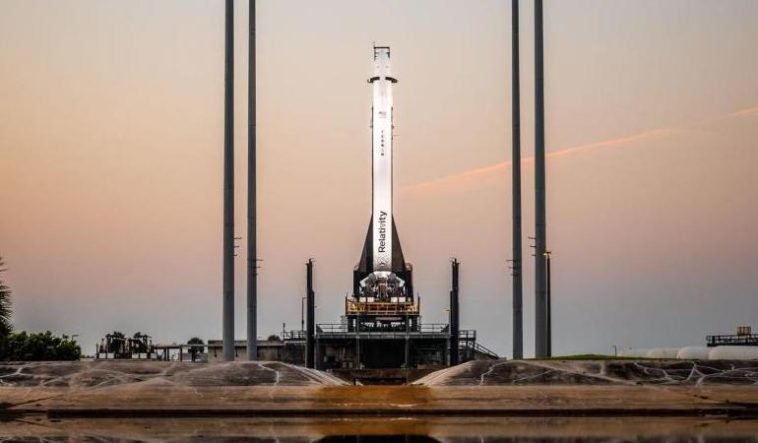California-based space startup, Relativity Space, had to abort its attempt to launch the Terran 1 rocket on Saturday at approximately 4 p.m. ET. The launch was scheduled for three hours between 1-4 p.m. EST at Cape Canaveral, Florida. This was the rocket’s second attempt at lift-off, and it comprises 85% 3D-printed parts.
The initial launch was supposed to take place on Wednesday, but it was canceled due to exceeding launch commit criteria limits for propellant thermal conditions on stage 2, according to the company’s statement.
Today’s launch attempt for #GLHF Terran 1 was scrubbed due to exceeding launch commit criteria limits for propellant thermal conditions on stage 2. The team is working diligently toward our next launch window in the coming days. Check back here soon for updates on the launch… https://t.co/LxWJzfZ9BI pic.twitter.com/M4RVu6EkR8
— Relativity Space (@relativityspace) March 8, 2023
Relativity Space took to Twitter after the launch was scrubbed, promising to provide more information about the cause of aborts that day. Earlier on Saturday, the launch crew tweeted that they were monitoring upper-level winds, which could be a potential concern for the launch.
As per reports, Relativity Space has not yet scheduled its next launch attempt. However, teams will take at least two days to replenish propellants at Cape Canaveral Launch Complex 16, stated to press reporters.
What is a 3D-Printed Rocket’s Mission?
The Terran 1, a prototype space rocket with no customer payload, is set to take off and undergo a stage separation, second engine start, and cutoff to achieve orbit. The primary goal of the initial launch is to prove the durability of the 7.5-foot diameter 3D-printed space rocket for both launch and space flight.
The company shared on Twitter that the lift-off and passing Max-Q, the point in the flight where the rocket is under maximum stress, will be a significant milestone. “Why? Because it’s the phase of flight where the structural loads on the vehicle are the highest, passing this point in flight proves our hypothesis: 3D printed rockets are structurally viable!” they explained.
If the Terran 1 successfully makes it to low Earth orbit (LEO), it would be a “total home run,” according to Relativity Space representatives. The rocket has been called “Good Luck, Have Fun” or “GLHF.” If Relativity Space achieves this goal, it would be the first privately held, venture-backed space company to do so on its first launch.
Tim Ellis, co-founder, and CEO of Relativity Space, proudly shared that their in-house team designed the rocket from scratch. They have built their factory using the world’s largest metal 3D printers and custom aluminum alloys. Furthermore, they have built their rocket engines and are now ready to launch it.
The upcoming launch of Terran 1 is the first step in Relativity Space’s ambitious interstellar plan to journey to Mars.
In 2020, the company joined forces with Impulse Space, located in El Segundo, California, to work on developing a Mars Cruise Vehicle and Mars Lander using a Terran R rocket. However, this project will not take place until at least 2024.
The team went HARD today and we intend to do so during our next attempt. More to come on the new launch date and window soon. #GLHF pic.twitter.com/VVyrfF09sL
— Relativity Space (@relativityspace) March 11, 2023


